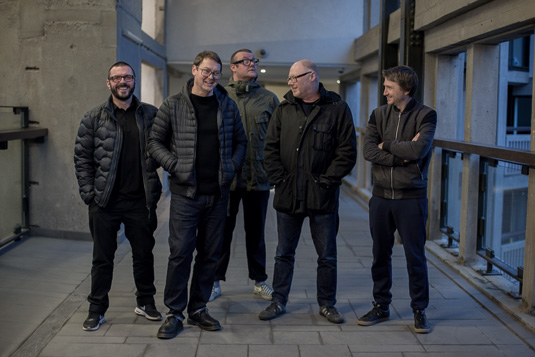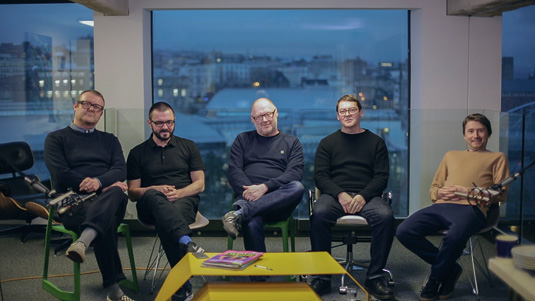5 ways to prepare for the future of the design industry
Learn how to stay relevant in the world of design with this advice from The Designers Republic.

How can creative directors, designers and art directors ready themselves for the next 20 years of change in the industry? What practical tips or movements, such as biophilic design, can they learn from? We chat to Matt Pyke, Ian Anderson, David Bailey and Nick Bax of The Designers Republic and get their expert tips.
01. Keep spotting new talent
Matt Pyke: "Look at the next generation, who have grown up with technology. If you can't beat them, join them. Embrace new graduates and really make the most of their uninhibited, fresh way of thinking."
02. Look in unexpected places
David Bailey: "Look in unexpected places, too – at people you wouldn't consider to be designers. They live in a more 'design-y' world, and could have ideas that you can harness and craft into something. There can be hidden gems in all walks of life."

03. You have to learn everything
Nick Bax: "We'll carry on with what we've been doing, which is being drawn to things that appeal to us. As new things happen, certain things resonate and you want to find out more. But you don't have to be good at everything; you don't have to be able to do everything. Have an overview of what's happening, but just go for what you love and what interests you."
04. Give yourself space
Matt Pyke: "One thing I've been planning for – just to make sure I stay alive for the next 20 years – is to give myself space. I find myself being more creative the less I actually think about a project, because I keep that helicopter view of it. Don't pride yourself on doing all-nighters for the rest of your life. there are smarter ways to manage your time. Recently I've been delegating a bit more, but I'm getting far more done productively and creatively because I'm focusing on the essentials."
05. Don't plan too far ahead
Ian Anderson: "I've spent most of my life trying to not know what's going to happen. To have to wake up every day knowing what's going to happen in 20 years' time and just sit around waiting for it seems to be the most uncreative thing I could do. I like to be amazed and astounded by things."
This article originally appeared in Computer Arts issue 250.
Daily design news, reviews, how-tos and more, as picked by the editors.

Thank you for reading 5 articles this month* Join now for unlimited access
Enjoy your first month for just £1 / $1 / €1
*Read 5 free articles per month without a subscription

Join now for unlimited access
Try first month for just £1 / $1 / €1

The Creative Bloq team is made up of a group of art and design enthusiasts, and has changed and evolved since Creative Bloq began back in 2012. The current website team consists of eight full-time members of staff: Editor Georgia Coggan, Deputy Editor Rosie Hilder, Ecommerce Editor Beren Neale, Senior News Editor Daniel Piper, Editor, Digital Art and 3D Ian Dean, Tech Reviews Editor Erlingur Einarsson, Ecommerce Writer Beth Nicholls and Staff Writer Natalie Fear, as well as a roster of freelancers from around the world. The ImagineFX magazine team also pitch in, ensuring that content from leading digital art publication ImagineFX is represented on Creative Bloq.
